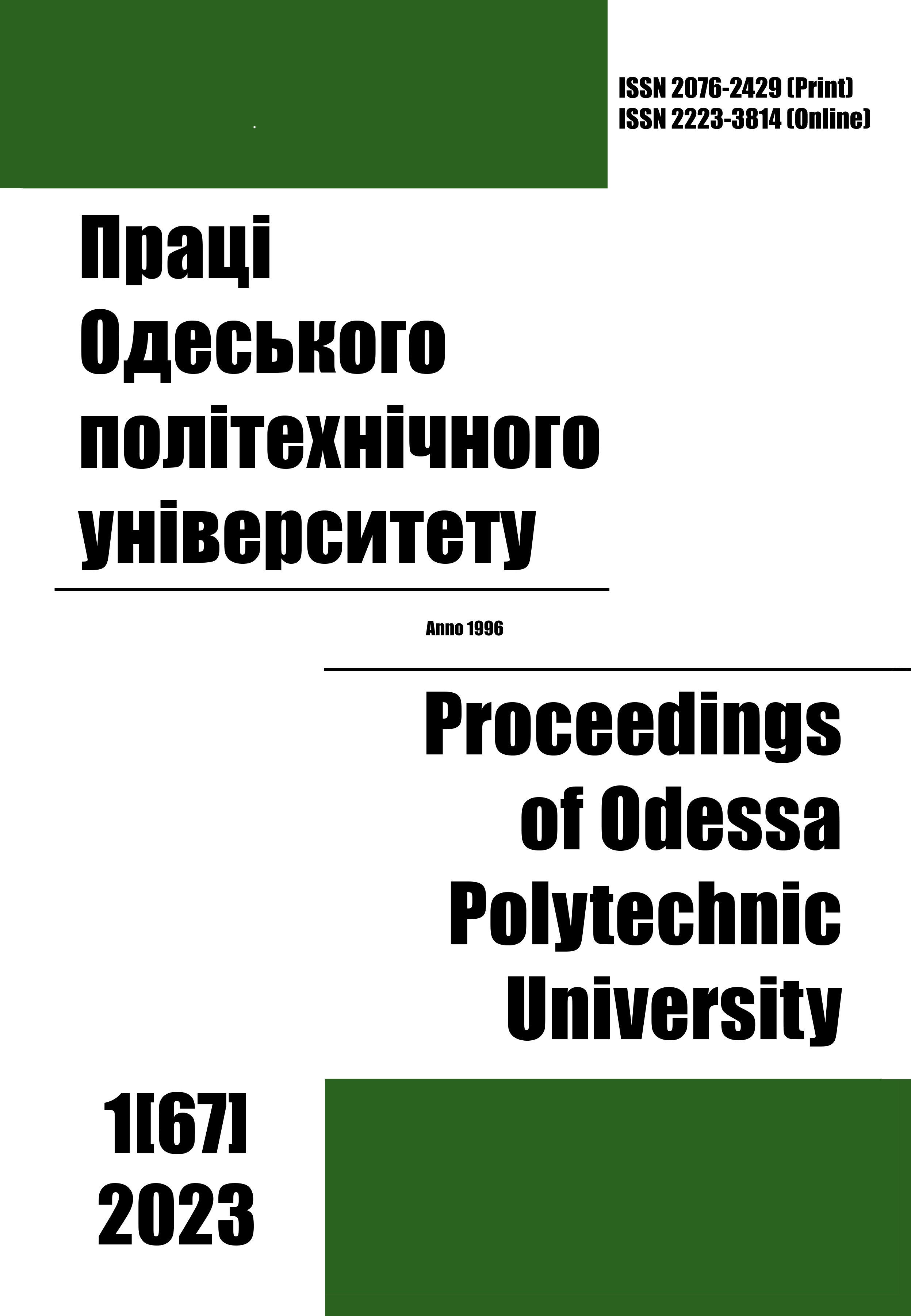Features of the Boundary Layer Organization in Tesla Disc Turbines
DOI:
https://doi.org/10.15276/opu.1.67.2023.06Keywords:
microturbine, Tesla turbine, boundary layer, laminar regimeAbstract
To ensure maximum efficiency of bladeless Tesla turbines, it is important to maintain a laminar flow regime within the
boundary layer that forms on the disc surfaces. Depending on the flow regime, the state of the disc surfaces, and the geometry of the interdisk gaps, the nature of the boundary layer varies. It is crucial for the flow regime to remain laminar, and the distance between the discs should not exceed twice the thickness of the boundary layer. Experimental investigations of the characteristics of the boundary layer during the flow around turbine blades were proposed to determine the parameters necessary for achieving maximum efficiency. These experiments were conducted in an aerodynamic test rig that provided a uniform velocity field with minimal turbulence (0.7 %) within a speed range up to 0.33 Mach. The primary focus of these studies was to determine the location of the transition zone within the boundary layer, which allows for the examination of conditions for stable maintenance and characteristics of laminar flow. The transition zone was determined based on changes in the tangential friction stress in the experiments. The obtained results facilitated the establishment of the necessary dimensions for the inter-disk gaps and the optimum values of the similarity criterion Re from the perspective of flow regime. For a smooth surface, laminar flow within the boundary layer is maintained up to a relative coordinate of x = 0.17 from the start of the surface, across a wide range of Reynolds numbers. For a rough surface, the extent of the zone with a laminar boundary layer is approximately the same as that for a smooth surface at Re=3.6∙105. However, at Re=7.4∙105 the laminar flow terminates slightly earlier, at x = 0.13 , with a very short transitional zone between laminar and turbulent flow characteristics. The thickness of the laminar boundary layer on a smooth surface is 0.5…0.7 mm, while for a rough surface, it is slightly greater at 0.7…0.8 mm. Therefore, to ensure high efficiency of Tesla disc turbines, the distance between the discs should be maintained at 1…1.5 mm, considering the requirements for laminar flow.
Downloads
References
NIKOLA TESLA U.S. PATENT 1061206 – TURBINE. 1913. URL: https://teslauniverse.com/nikola-tesla/patents/us-patent-1061206-turbine.
Jedrzejewski L., Lampart P. Tesla friction-type micro turbine for small-scale cogeneration. Вісник двигунобудування. 2011. № 2. С. 131–137.
Когенераційні технології в малій енергетиці : монографія / В. А. Маляренко, О. Л. Шубенко, С. Ю. Андрєєв, М. Ю. Бабак, О. В. Сенецький. Харків. нац. ун-т міськ. госп-ва ім. О. М. Бекетова, Ін-т проблем машинобуд. ім. А. М. Підгорного. Харків : ХНУМГ ім. О. М. Бекетова, 2018. 454 с.
Забезпечення підвищення надійності та ефективності систем теплопостачання за рахунок використання мікротурбін в умовах нестабільного енергоживлення / А. Мазуренко, О. Климчук, Г. Лужанська, П. Іванов, І. Сергеєв. Праці Одеського політехнічного університету. 2022. Вип. 2(66). С. 58–63. DOI: 10.15276/opu.2.66.2022.07.
Каліон В.А. Обчислювальна гідромеханіка. Примежовий шар та нев’язкі течії : навчальний посібник. К. : Видавничо-поліграфічний центр “Київський університет”, 2013. 210 с.
Шлихтинг Г. Теория пограничного слоя. М. : Изд. «Наука», 1974. 435 с.
Використання мікротурбін автономного енергозабезпечення в міському та сільському господарстві / Мазуренко А.С., Лужанська Г.В., Іванов П.О., Гафінчук В.М., Хавара Ю.П. Proceedings of the II International Scientific and Practical Conference. Lisbon, Portugal. 2023. pp. 468–470. URL: https://isg-konf.com/modern-education-using-the-latest-technologies/.
Radosavljević M. Application of small and micro cogeneration units. Vojnotehnički glasnik. 2018. Vol. 66, Issue 2. P. 431–445. DOI: 10.5937/vojtehg66-7309.
Dieter Bohn Micro Gas Turbine and Fuel Cell A Hybrid Energy Conversion System with High Potential. Institute of Steam and Gas Turbines Aachen University. Templergraben 55. D-52056. Aachen. GERMANY, 2006. 139 p.
Praast T. D. Theory and Plans for the Tesla Turbine / TMMI 1315 Pepper Drive #7. El Cajon CA 92021-1425. 1993. 11 p.
Rice W. Tesla Turbomachinery. Proc. 4th Int.Tesla Symp. Serbian Academy of Sciences and Arts, Belgrade, Yugoslavi. 1991. pp. 117–125.
Lampart P., Jedrzejewski L. Investigations of aerodynamics of Tesla bladeless micro-turbines. J. Theor. and Appl. Mech. 2011. Vol. 49, No. 2. P. 477–499.
Pritam Kumar Yadav, Priti Shankar Chatterjee. Design of Tesla coil and its uses in Wireless Power Transmission (WPT). International Journal of Latest Engineering Research and Applications. 2017. Vol. 02, Is. 06. P. 07–10.
Халатов А. А., Мочалін Є. В., Димитрієва Н. Ф. Основи теорії примежового шару : навч. посіб. для студ. спеціальності 105 «Прикладна фізика та наноматеріали». Київ : КПІ ім. Ігоря Сікорського, 2019. 191 с.
Мазуренко А.С., Олесевич К.В. Дослідження течії в прикордонному шарі на шорсткій поверхні лопаток турбін. Енергетичне машинобудування. 1974. Вип. 18. С. 111–125.






